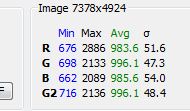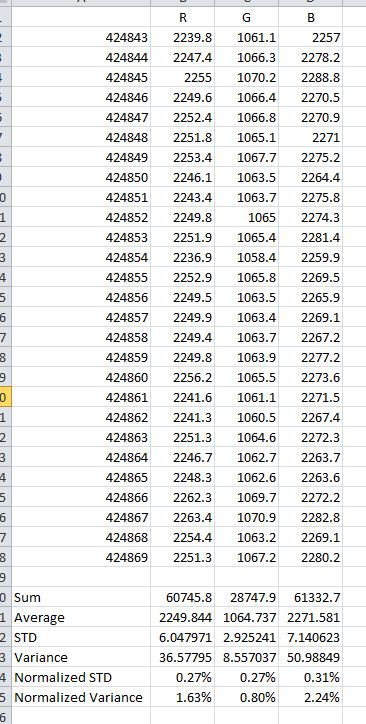I’m starting to print for the In Motion exhibition which opens at the Center for Photographic Art in March. I usually print the images from the Staccato series on Epson Exhibition Fiber paper. I’ve been looking for matboard that matches the paper for more than a year without success; everything I’ve tried has looked yellow… [Read More]
Testing for ETTR, part 18
The UniWB technique I’ve been developing worked fine on an M9. Coefficients +/- 3%.
Testing for ETTR, part 17
Raw histogram calibration for the Nikon D800E I have good news and bad news. The good news. The UniWB calibration procedure I’ve been working on went swimmingly with the 800E. The whole thing took five or six minutes (I’ve been doing this a lot, so I’m faster than the average bear). Four exposures, three Rawdigger… [Read More]
Testing for ETTR, part 16
This is a continuation of analyzing the process variables involved in doing UniWB from an LCD monitor with only Rawdigger and Photoshop as the software tools involved. This post is statistical, technical, and nerdy. It is presented in the spirit of giving the interested reader to tools to replicate what I’m doing. If you’re just… [Read More]
Testing for ETTR, part 15
Half of me would like to drop this in-camera histogram calibration project, since I’ve gotten it to the point where it works better for me than the Guillermo Luijk’s process, and is good enough for my use with iterations on the final step, but I’ve started down this road and I’m not going to quit… [Read More]
- « Previous Page
- 1
- …
- 479
- 480
- 481
- 482
- 483
- …
- 574
- Next Page »


